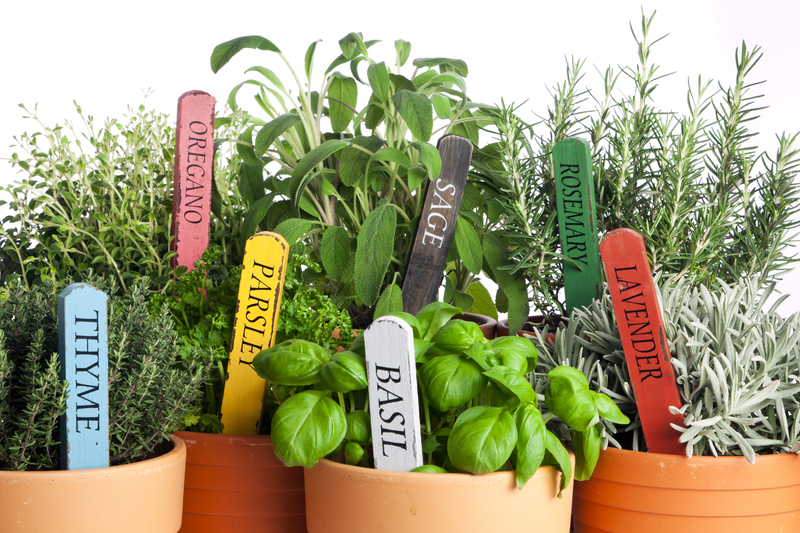Keep Your Garden Alive: Essential Winter Protection Tips
Posted on 08/06/2025
Keep Your Garden Alive: Essential Winter Protection Tips
As the temperatures drop and the chill of winter settles in, every passionate gardener faces the same concern: how to protect your garden during winter. The cold season can be unforgiving to our beloved plants, vegetables, shrubs, and trees. However, with proper winter garden protection tips, you can ensure that your green oasis not only survives but thrives come spring. This comprehensive guide will equip you with all the knowledge and strategies needed to keep your garden alive in winter and ready for growth in the following seasons.

Understanding the Impact of Winter on Your Garden
Before diving into actionable steps, it's important to understand how winter affects your garden. Cold temperatures, frost, snow, and icy winds can strain plant cells, dehydrate soil, and damage even the hardiest of perennials and evergreens. Winter's reduced sunlight diminishes photosynthesis, while freeze-thaw cycles can heave plants out of the soil.
Knowing the challenges posed by the season empowers you to take targeted measures for winter garden survival. Each region and plant variety faces unique risks--so consider your local climate, species selection, and microclimate conditions as you plan your defense.
Prepare Your Garden: Proactive Winterization Steps
The key to a healthy garden in spring is preparing it before winter hits in full force. By taking these proactive steps, you can lay a solid foundation for winter garden protection:
1. Tidy Up, But Don't Overdo It
- Remove dead annuals: Pull up annuals that have finished their lifecycle to reduce pest habitats.
- Prune sparingly: While some perennials and shrubs benefit from trimming, avoid heavy pruning as it can promote new growth vulnerable to frost.
- Leave some debris: A light layer of leaves or chopped stems acts as a natural mulch, protecting plant crowns and beneficial insects overwintering in your garden.
2. Feed and Hydrate Your Plants
- Deep watering: Moist soil insulates roots better than dry soil. Give your trees, shrubs, and evergreens a thorough soaking before the ground freezes.
- Fertilize carefully: Apply slow-release compost or organic fertilizer in late fall to give roots nutrients throughout winter, but avoid high-nitrogen fertilizers that encourage tender growth.
3. Optimize Mulching
Mulching is a gardener's best friend when it comes to winter plant protection. Mulch acts as a thermal blanket, maintaining consistent temperatures and retaining moisture.
- Use organic mulch: Shredded leaves, straw, pine needles, or wood chips are all great options.
- Apply the right thickness: 2-4 inches is optimal; too thick can lead to rot, while too thin offers little insulation.
- Protect trunks and crowns: Keep mulch a few inches away from stems or trunks to prevent fungal diseases and rodent damage.
4. Shield Your Soil
Bare soil is prone to erosion, compaction, and nutrient leaching during winter storms. Consider planting winter cover crops like clover, winter rye, or vetch, which, in addition to protecting the soil, improve fertility come spring.
Tactics for Protecting Specific Plant Types
Winter Care for Perennials
- Cut back with care: Some perennials (like hostas and daylilies) can be cut back after frost, but others (like ornamental grasses and coneflowers) should be left intact to provide food and shelter for wildlife.
- Insulate crowns: Mound extra mulch around the base of delicate perennials, such as lavender or marginally hardy varieties, for extra warmth.
- Label markers: Use sturdy plant markers in case snow cover masks where perennials are planted, preventing accidental digging in spring.
Protection for Trees and Shrubs
- Wrap trunks and branches: Young or thin-barked trees are vulnerable to sunscald and frost cracks. Use tree wrap, burlap, or commercial guards for added protection.
- Burlap screens: Erect windbreaks or burlap screens around evergreens and tender shrubs prone to windburn and desiccation.
- Water during thaws: If temperatures rise above freezing, water evergreens and newly planted trees to counteract winter drought.
How to Protect Delicate and Container Plants
- Move containers: Shift potted plants close to your home's sheltered walls, under overhangs, or into unheated garages or sheds for increased warmth and wind protection.
- Elevate pots: Place containers on pot feet or bricks to prevent waterlogging and freezing roots.
- Wrap pots: Insulate containers with bubble wrap, burlap, or straw to shield roots from deep freezes.
- Choose cold-tolerant containers: Opt for frost-proof pots made of resin, fiberglass, or thick terracotta.
Winterizing Vegetable Beds
- Harvest mature crops: Pull up or dig any vegetables ready to pick before they rot or attract rodents.
- Plant cover crops: Green manures like winter peas or oats protect soil and enhance fertility.
- Mulch root crops: Carrots, beets, and parsnips can be left in the ground with heavy mulch for gradual winter harvests.
- Use hoop houses or cold frames: Extend your growing season and protect late crops from harsh conditions by installing mini greenhouses or floating row covers.
Extra Steps for Maximum Winter Garden Protection
Frost, Snow, and Ice Defense
- Cover sensitive plants: Use old blankets, horticultural fleece, or frost cloth to shield tender varieties on frosty nights. Remove in the morning to prevent overheating.
- Clear snow carefully: Gently brush heavy snow off branches to prevent breakage--avoid shaking icy limbs, as this can cause splitting.
- Avoid salt damage: When de-icing nearby walkways or driveways, use sand or non-salt alternatives to protect root zones from salinity buildup.
Pest and Wildlife Management
- Rodent barriers: Install wire mesh or hardware cloth around the base of young trees and shrubs to deter rabbits, mice, and voles.
- Discourage deer: Apply repellents or physical barriers around susceptible plants and low-hanging branches.
- Beneficial homes: Leave some brush piles and seed heads for birds and pollinators overwintering in your garden habitat.
Protect Your Garden Tools and Equipment
- Clean and store tools: Wash, dry, and oil pruners, shovels, and trowels. Store them in a dry location to prevent rust.
- Drain hoses and systems: Disconnect garden hoses and drain irrigation systems to prevent cracking and freezing.
- Organize supplies: Take inventory of fertilizers, seeds, and supports so you're ready for a strong start next year.
Plan for Next Spring--What to Do During the Winter
Winter might slow your gardening activities, but it's the perfect time to plan for success in the next growing season. Use these months to:
- Review garden notes: Reflect on what thrived and struggled last season. Adjust plant choices and layouts accordingly for next year.
- Order seeds early: Beat the spring rush by researching and purchasing new varieties while demand is low.
- Sharpen skills: Take online gardening workshops, read expert guides, or join local gardening forums for new tips and tricks.
- Test your soil: Send samples to a soil lab for analysis and plan necessary soil amendments for spring.

Frequently Asked Questions About Winter Garden Protection
How do I protect my garden beds during winter?
Cover beds with a layer of organic mulch, straw, or plant a cover crop. This prevents erosion, suppresses weeds, retains soil moisture, and buffers extreme temperature swings.
Is it necessary to water in winter?
Absolutely! Especially for evergreens and new plantings--water when temperatures are above freezing and ground is not frozen to prevent winter desiccation.
Should I fertilize in winter?
Avoid fertilizing in the heart of winter, as it can promote new, tender growth vulnerable to cold. Apply slow-release fertilizers or compost in late fall to support roots gently over the season.
Can I use plastic to cover my plants?
Use caution--plastic retains heat but also moisture so it can "cook" your plants if not removed promptly after sunrise. Fabrics like burlap or specialized frost cloths are generally safer choices.
Conclusion: Keep Your Garden Alive All Winter Long
Protecting your garden in winter demands attention to detail, timely preparations, and ongoing care through the coldest months. By following these essential winter garden protection tips--from mulching, wrapping plants, and managing moisture, to safeguarding against pests and planning ahead--you can ensure your landscape remains vibrant and resilient.
With the right combination of knowledge and effort, your winter garden can survive and even flourish, providing lasting joy and a strong foundation for a lush spring awakening.
Stay vigilant, stay curious, and never stop growing--no matter what winter brings! If you have your own secret for keeping your garden alive in winter, share it in the comments below.



